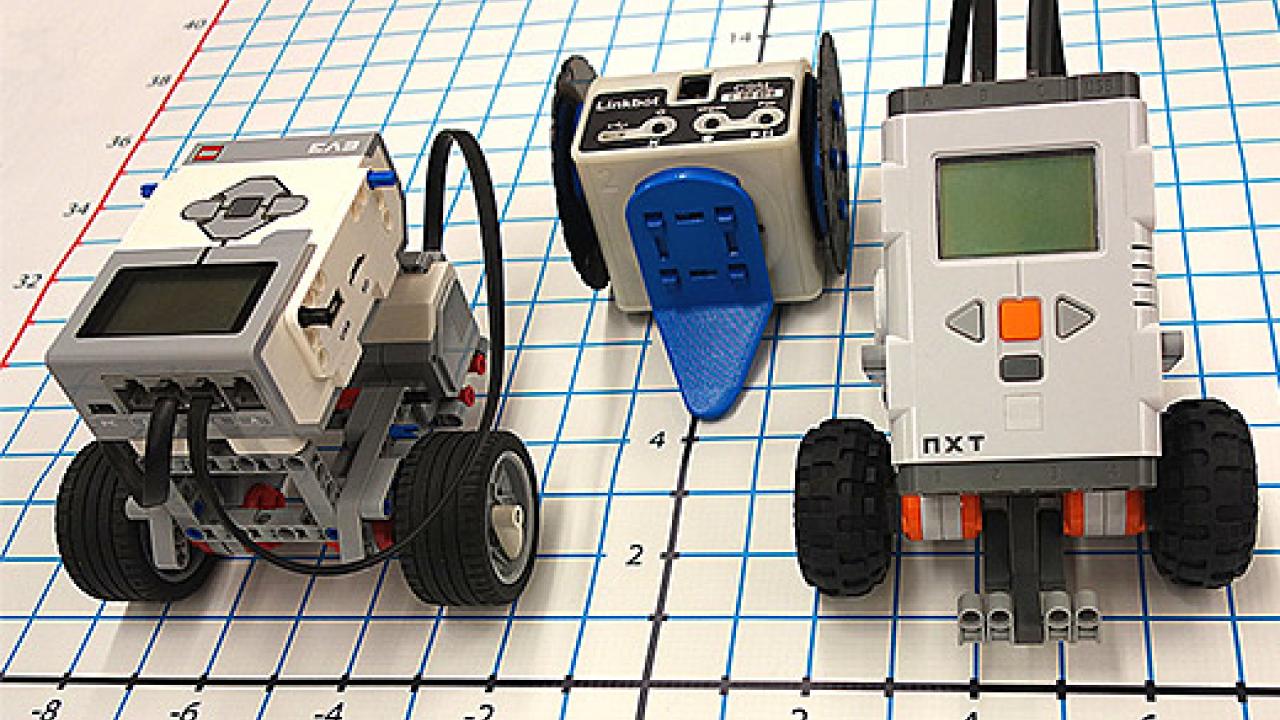Teachers can now download free breakthrough tools for teaching math, coding and robotics with the launch of C-STEM Studio from the Center for Integrated Computing and STEM Education at the University of California, Davis.
C-STEM Studio is a platform for teaching science, technology, engineering and mathematics through computing and robotics for integrated learning. It includes code, comprehensive documentation, teacher guides and textbooks in one download.
“This is a turnkey solution for teachers and students,” said Harry Cheng, director of the C-STEM Center and professor of mechanical and aerospace engineering at UC Davis. C-STEM Studio combines the latest in computing and robotics with educational technology, and helps teachers organize teaching resources and homework.
The center’s integrated curriculum for math, coding and robotics is already in use in about 200 elementary, middle and high schools, mostly in California, affecting some 10,000 students. The center focuses on algebra, a gatekeeper for high school graduation and careers in STEM fields. The C-STEM algebra curriculum is fully aligned with Common Core state standards in mathematics, Cheng said.
C-STEM Studio is the most engaging way to learn math, coding and robotics, the simplest approach to program a robot and the easiest technology to control multiple robots. The software works with both Linkbots made by Barobo Inc. and Lego Mindstorms NXT/EV3 robots, and can be used to program both real and “virtual” robots. It can also be used to program an Arduino microcontroller.
RoboBlockly, puzzle-piece programming in C++
The UC Davis C-STEM Center is also launching RoboBlockly, a Web-based robot simulation. RoboBlockly uses a simple puzzle-piece interface to program virtual Linkbot and Lego robots. Constructing programs with blocks also generates C++ code that can be used to control real robots. The RoboBlockly curriculum includes student self-guided Hour of Code, robotics and coding activities, as well as teacher-led math activities that meet Common Core state standards for fourth to ninth grade. Teacher’s notes and resource packets for all these activities are freely available.
RoboBlockly can be used with a modern Web browser on any computing devices including laptops, tablets, iPads and smartphones, and is available in multiple languages.
Schools using the C-STEM curriculum can attend the annual C-STEM Day held every May at UC Davis and in the past two years in Orange County. C-STEM Day presents an opportunity for students to use their programming skills to solve problems in the RoboPlay Challenge Competition, and to demonstrate their creativity in the RoboPlay Video Competition.
An engineer’s approach to challenges in STEM education
Cheng, whose research is in computing and robotics control systems, began experimenting with computing and robots as teaching tools nine years ago with the idea of closing the achievement gap for underrepresented groups and providing computer science education for every K-12 student. But he found that schools where students were struggling in math and science could not add a computing program. So instead, he developed a comprehensive curriculum that uses robots and programming to teach math and science for every student, in addition to computing curriculum as electives.
“I approached the problem as an engineer,” he said. Cheng founded the UC Davis C-STEM Center in 2010 as a hub to work with schools. The center is now a UC Approved Educational Preparation Program for Undergraduate Admission for all UC campuses and with UC A-G Program Status.
Using computing and robots for hands-on teaching of math and science can inspire and engage students who are otherwise turned off by STEM subjects, Cheng said. One example is Roosevelt Middle School in Oakland, California. In their first year of using the program, students from the school, where 90 percent of students qualify for free or reduced-price lunches, placed third in the RoboPlay Challenge Competition at the 2015 C-STEM Day.
In addition to C-STEM Day, the center organizes an annual conference on integrated computing and STEM education (Nov. 7, 2015), summer and fall workshops to train teachers in the curriculum (Nov. 21-22, 2015), train-the-trainer program for certified C-STEM trainers to hold C-STEM trainings in their geographic area (Dec. 7-9, 2015), and the GIRL (Girls in Robotics Leadership) summer camps for girls. The GIRL camp began at UC Davis in 2013, expanded to three locations in summer 2015 and will expand further in 2016 to meet demand.
Since 2010 the center has received over $5 million in grants from the National Science Foundation, as well as support from the California Department of Education including collaborative grants with the Yolo and Solano County Offices of Education. Other sponsors include Hewlett-Packard, Sandia National Laboratories, Barobo and SoftIntegration.
Media Resources
Andy Fell, Research news (emphasis: biological and physical sciences, and engineering), 530-752-4533, ahfell@ucdavis.edu
Harry Cheng, C-STEM Center, 530-752-5020, hhcheng@ucdavis.edu
